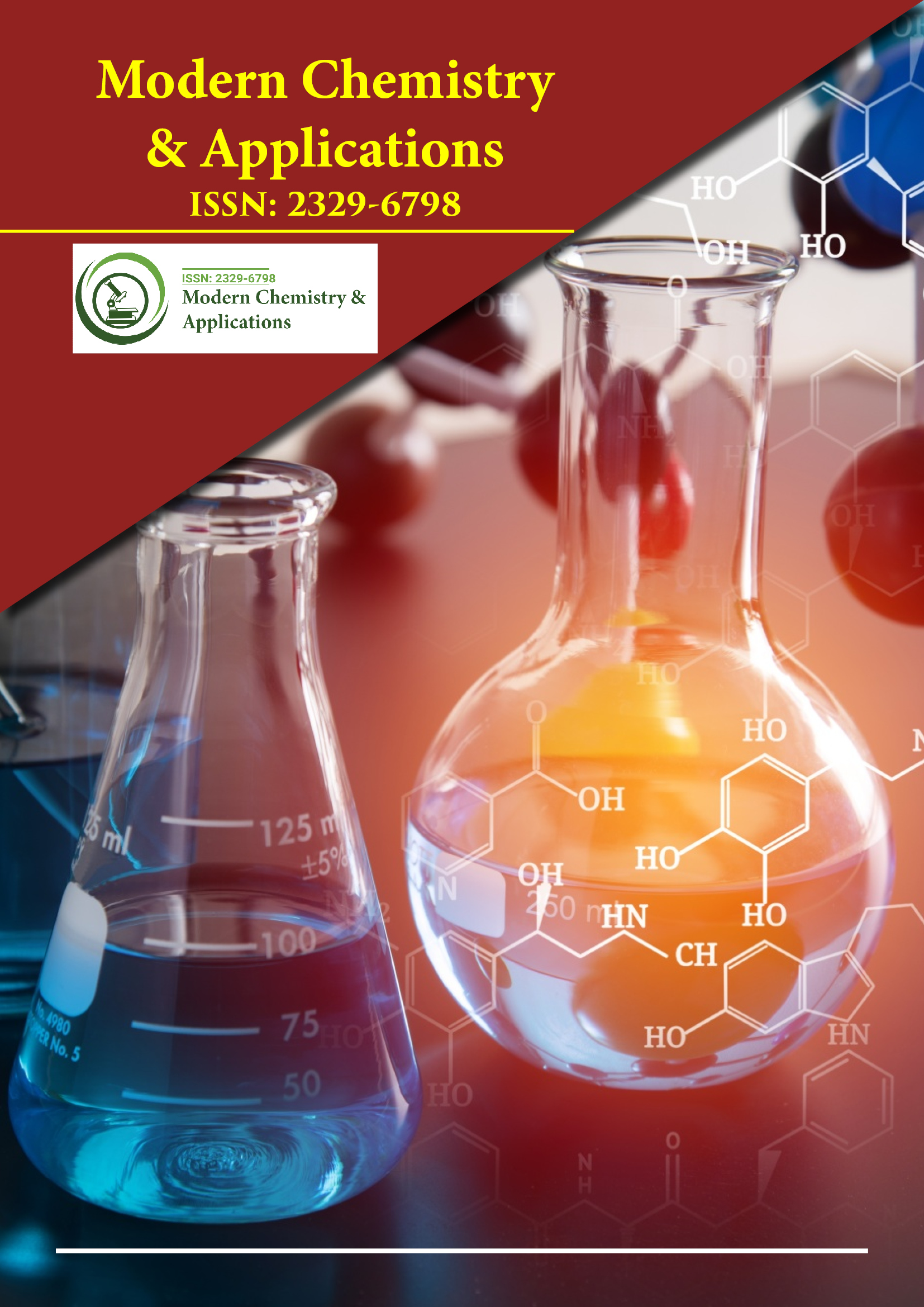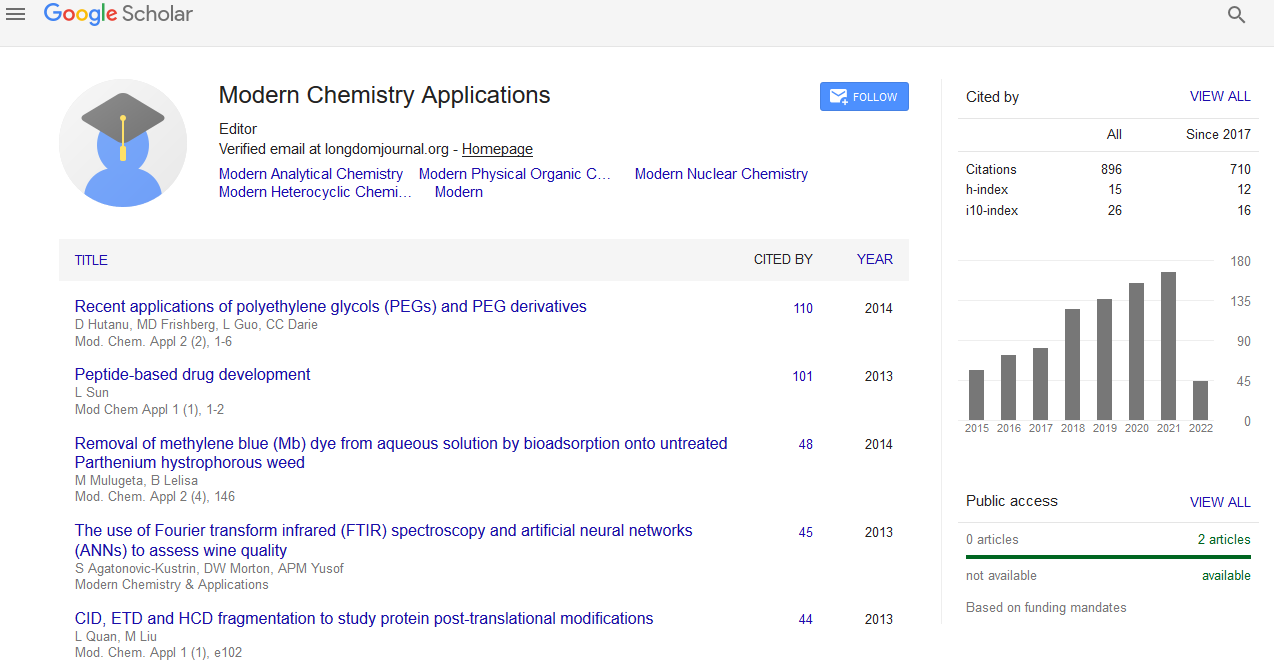Indexed In
- Open J Gate
- JournalTOCs
- RefSeek
- Hamdard University
- EBSCO A-Z
- OCLC- WorldCat
- Scholarsteer
- Publons
- Geneva Foundation for Medical Education and Research
- Google Scholar
Useful Links
Share This Page
Journal Flyer

Open Access Journals
- Agri and Aquaculture
- Biochemistry
- Bioinformatics & Systems Biology
- Business & Management
- Chemistry
- Clinical Sciences
- Engineering
- Food & Nutrition
- General Science
- Genetics & Molecular Biology
- Immunology & Microbiology
- Medical Sciences
- Neuroscience & Psychology
- Nursing & Health Care
- Pharmaceutical Sciences
Synthesis of triazole-linked morpholine oligonucleotides via CuI catalysed cycloaddition
5th Global Chemistry Congress
September 04-06, 2017 | London, UK
Rima D Alharthy, Matthew J Palframan, Paulina K Powalowska and Christopher J Hayes
King Abdulaziz University, Saudi Arabia
University of Nottingham-University Park, UK
Posters & Accepted Abstracts: Mod Chem Appl
Abstract:
The CuI catalysed (3+2) azideā??alkyne cycloaddition (CuAAC) has been used to construct modified inter nucleotide linkages, to prepare nucleic acid conjugates, and as a strand ligation tool. In particular, the artificial triazole-linked DNA TLDNA 1 retains good aqueous solubility, is stable towards enzymatic degradation, and can be read by polymerases. As part of our own research aimed at developing therapeutic nucleic acids, we decided to examine triazole-linked morpholino (TLMO) hybrid structures 2 (Fig. 1) as they could combine the ease of synthesis of the TLDNAs 1 with the increased melting temperatures associated with morpholino drug candidates. Thus, triazole-linked morpholino (TLMO) oligonucleic acids were synthesized using the CuAAC reaction. The TLMO hybrid 2 can be disconnected to reveal the azide 4 and the alkyne-substituted morpholine 3 as potential precursors for the proposed CuAAC reaction (Fig. 1). Synthesis strategy involved oxidative cleavage of ribose, reductive amination treatment with sodium cyanoborohydride/AcOH to build the propargylamine partner. The azido thymidine building block was accessed via a two-step sequence involving mesylate formation and displacement with sodium azide. Next, CuAAC was successfully applicable to obtain TLMO. A range of catalysts and solvents were initially screened, and it was quickly found that the use of copper(I) iodide in THF:tBuOH:H2O (3:2:1) with microwave heating (80Ā°C) was optimal. Under these conditions, cycloaddition of the acetylene with the TBS-protected azide gave the TLMO dimer in good yield, and TBAF de-protection gave the desired alcohol in good yield. The modified DNA analogues were incorporated into 13-mer sequences via solid phase synthesis. UV melting experiments showed that the TLMO modification gives higher Tm values than the corresponding TLDNA modification. Thus, addition of the morpholine modification can regain half of the Tm lost by incorporating the triazole inter nucleotide linkage.
Biography :
Rima D Alharthy is an Organic Synthetic Chemist. During her Post-doctoral research, she was working on the synthesis of attractive bioactive compounds and consequently evaluating their activity. This includes the synthesis of hetrocycles such as Pyrido[2,3-b]pyrazines, polyphenols, pyrazolo pyrimidine scaffolds and hybrid acridine-HSP90 ligand conjugates.


